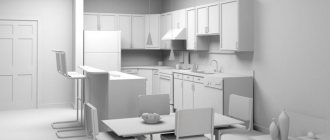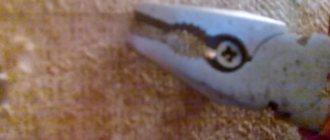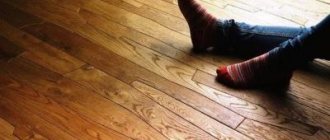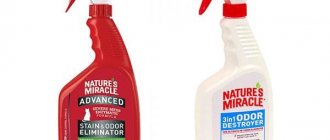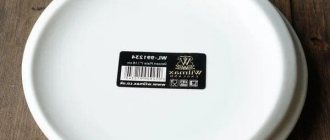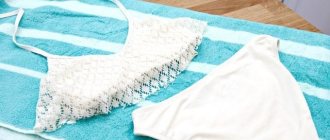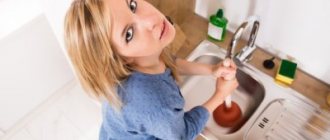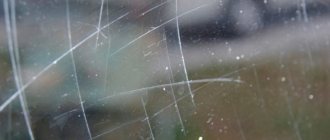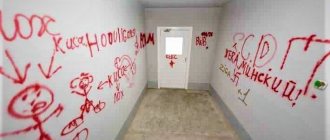If we consider liquid wallpaper as an alternative to modern decorative plasters and all kinds of paints, it should be noted that they are very similar.
However, when applied to a work surface, the structure is different and the result is different. With their help you can create your own interior design. Today, ZhO can be easily purchased at any specialized hardware store. They are sold dry in sealed packaging. The shelf life and application technology are indicated on the back side.
But today we are not interested in the method of applying the finished mixture to the wall, but in caring for the liquid. In particular, the question is about ways to care for them.
What is liquid wallpaper
The composition of dry mixtures includes various raw materials. Such as:
- Cotton.
- Linen.
- Cellulose.
- Glitter.
As well as special adhesive mixtures.
Thanks to natural elements, liquid wallpaper is considered a clean, environmentally friendly raw material. They can be used to decorate walls in any technical and residential premises, or applied to wall surfaces in children's rooms. The material is easy to use. Both professionals and novice builders at the household level can work with the mixtures. If you follow the manufacturer's instructions and follow the sequence of actions, then there will be no problems when applying them.
Is wet cleaning acceptable?
On the one hand, most manufacturers write that it is absolutely impossible to wash such a coating, which is stated in the instructions. On the other hand, this prohibition is not entirely correct, since in some situations and with the proper skill, liquid wallpaper can be washed, although it is undesirable.
First of all, the permissibility of wet cleaning depends on the presence or absence of an acrylic varnish coating. In the first case, cleaning should not cause any particular difficulties, since the varnish will prevent water from entering the structure of the finishing material. In the second case, everything is much worse, since when wet there is a high probability of ruining the finish.
How to care
The issue of caring for liquid wallpaper is not at all idle. The service life of the product depends on the correctness of actions. It is important that due to the antistatic properties of LW (liquid wallpaper), dirt, dust and other debris are practically not attracted to the lined surface.
But, in any case, the finishing needs regular, and most importantly, proper care. If you carefully read the manufacturer's instructions, it will become clear that you CANNOT wash the JO! So how to clean liquid wallpaper from dirt, how to remove small fractions of debris? Manufacturers and experts advise using the dry cleaning method.
In particular, you can effectively care for a lined surface using a household vacuum cleaner. If dirt appears on the wall during use, you can easily remove it using an eraser. You just need to work with it carefully so as not to damage the drawing.
If more serious problems arise than ordinary pollution, the problem area will require partial replacement of the wallpaper. In this case, the technology for applying liquid liquid is similar to the initial treatment of the wall surface.
Heavy soiling
One of the most interesting features of liquid wallpaper is its maintainability. Therefore, an area of the coating where, for example, a child’s drawing with a felt-tip pen needs to be removed, or serious contamination has appeared, can be “restored” by replacing the damaged area with a new one. This method is also applicable if, when trying to wash the coating, the finish was damaged.
To do this, you can use excess “liquid silk”, which usually remains after repair work. To do this, the damaged area is well soaked and carefully removed using a spatula. Then the bare section of the wall is primed to improve adhesion between it and the coating. After this, the finishing material itself is applied.
Note! Before applying liquid wallpaper to the wall, it is better to try applying it to some other surface. This is necessary in order to check how the color will look in the interior. This is especially true if it is not possible to use the same composition that was used during the repair last time.
Those who are just planning to use liquid wallpaper in their apartment or are already carrying out renovation work can be advised not to throw away their remains. As already mentioned, they can be useful for “patches”. It is recommended to store leftovers in securely sealed packaging.
Is it possible to wash
Answering the question: is it possible to wash liquid wallpaper, the answer is yes. But, you need to follow a number of rules, which will be discussed below. To avoid damaging the surface:
- Do not use chemical cleaning agents.
- Do not remove dirt using sandpaper, a wire brush, or other abrasive materials.
- When treating the surface, you do not need to use a large amount of water. In this case, the wallpaper quickly swells, absorbing moisture, and loses its water-repellent properties. In addition, using water in large quantities will inevitably lead to mixing of contaminants with the adhesive composition.
Common mistakes
@dekorshtukaturka.ru
- Use of chemical cleaning agents when washing;
- Removing dirt using abrasive materials (wire brushes, sandpaper);
- If the wallpaper has changed color due to tobacco smoke, when repairing a certain area, you need to choose the shade of the walls that is currently available, and not the one that was originally;
- Sometimes substances that were previously used during finishing can affect the color shade of silk plaster and change it;
- If noticeable yellow spots appear, it means there are metal elements somewhere nearby. In this case, you need to remove the stained areas, apply protective enamel, and then apply the material again.
How to wash liquid wallpaper when cleaning
It's simple: the surface of the wall or a section of wallpaper needs to be wiped with a slightly damp cloth.
Since liquid wallpaper has antistatic properties, frequent treatment is not required.
The issue of servicing liquid metal parts is simpler if they are pre-varnished.
Varnish is known to have water-repellent properties. You can wipe the walls with cleaning products or water. Most often, varnishing at the final stage of applying liquid wallpaper is necessary in rooms with a high degree of humidity. This:
- bathroom;
- toilet;
- kitchen.
The use of varnish in the hallway or living spaces did not justify itself: high costs without a clear effect. In addition, it must be taken into account that after varnishing the silk structure loses the ability to repair individual fragments.
In addition, when renovating premises, it is very difficult to remove liquid coatings coated with varnish; you need to know and remember this.
How to wash properly
- The wallpaper should be varnished. But then silk plaster will lose its main quality - repairability.
- For walls that are not varnished, use a slightly damp, clean cloth.
Attention! Use a lot of water, don't wash it often.
- You can try to erase the greasy stain with an eraser.
- If it doesn’t work, then we take water and a rag. With their help, we soak the dirty area, remove it with a spatula and apply a new layer of wallpaper to this area. The difference with the entire wall will not be visible.
Preparing the premises
To remove liquid wallpaper from the wall, you need to prepare the room. Procedure:
Remove all furniture from the room. If this is not possible, it is covered with plastic wrap.- De-energize the room.
- They remove switches, unscrew sockets, and remove lighting fixtures.
- Remove the baseboards.
- Cover the floor with cardboard and cover it with plastic film on top.
- Windows and doors are covered with cellophane. The most convenient way is to attach it with tape.
If it is not possible to remove all the furniture from the room, it must be moved to the center of the room and covered with film so that there are no cracks or openings.
Reuse of liquid wallpaper
Every time after repairs, remnants of the used material appear. In this case, reusing liquid wallpaper is permissible, so a supply of leftover material will come in handy if the question arises of how to repair liquid wallpaper.
- The remains of the diluted mixture can be stored in two ways, frozen, this method will create inconvenience, taking up space in the refrigerator. After it is defrosted, the adhesive ability is restored. Repeated freezing is not advisable.
- Or completely drain the solution and store it dry. If necessary, it is also diluted with water, infused and it is possible to reuse liquid wallpaper. After drying, transfer the mixture into a plastic bag and leave for storage. The shelf life is unlimited.
Options for removing liquid wallpaper from walls
How to remove liquid wallpaper from walls? The method of dismantling “liquid silk” depends on the type of wallpaper, the surface behind it and the preferences of the artist. Below you will find various dismantling methods and step-by-step instructions.
The method of dismantling “liquid silk” depends on the type of wallpaper, the surface behind it and the preferences of the artist.
Spatula
If an additional layer of paint is not applied to the cladding, it can be removed from the walls with a spatula. This is done like this:
- After thoroughly preparing the room, prepare a homemade mixture or use a store-bought one.
- Next, the surface of the walls is soaked with this solution using a large sponge cloth or a soft roller.
- Pass with a brush or small sponge dipped in solution over inaccessible spaces and corners.
- When half an hour has passed, everything done above is repeated.
- The algorithm is repeated again until the material turns into a kind of paste state.
- When the wallpaper is completely wet, remove it with a spatula.
- In the place where the putty knife cannot remove the material, the wall is re-wetted and cleaned again.
If an additional layer of paint is not applied to the cladding, it can be removed from the walls with a spatula.
Grinding machine
The method using a sander is used when the liquid wallpaper is painted on top with varnish or paint. The process itself goes as follows:
- Protective equipment (respirator, goggles, gloves) is put on the face and hands.
- “Liquid silk” is cleaned off with a grinding machine. In this case, the tool must be applied well directly to the wall.
- Every half hour there is a break of 10 minutes to cool down the machine and rest. It is worth knowing that for every 10 square meters it can take up to 12 hours of working time.
- Next, the garbage is removed.
The method using a sander is used when the liquid wallpaper is painted on top with varnish or paint.
Industrial hair dryer
An industrial hair dryer is used when work is done manually using a spatula. This algorithm is given above. A hairdryer is needed to easily remove wallpaper from difficult places. They are simply warmed up and cleaned with hand tools.
An industrial hair dryer is used when work is done manually using a spatula.
Steam generator
The operating principle of the steam generator is similar to the operating principle of an industrial hair dryer. Only the entire surface of the wall is treated with a steam generator, and not just hard-to-reach places. Next, the lining is cleaned with a spatula. When everything is done correctly, the steamed wallpaper can be removed very quickly and without much effort.
The steam generator is used to treat the entire surface of the wall, and not just hard-to-reach places.
Using a special solution
To prepare a concentrate for cleaning walls from liquid wallpaper you will need:
- Grate the laundry soap using a coarse grater or plan it with a knife;
- Dilute in 4 liters of liquid;
- Bring the resulting mass to a boil.
Next, the surface is wetted with this mixture and the old wallpaper is cleaned off with a spatula.
It is possible to prepare a mixture of household chemicals (but not acidic) and water. All ingredients are mixed and this mass is spread on the wall. After which the liquid silk is also removed with a hand tool.
Also, if the owner does not want to spend time preparing the mixture, you can find a special remover for liquid wallpaper in a hardware store.
The surface is moistened with a mixture of laundry soap and the old wallpaper is scraped off with a spatula.
Other possible options
It is also possible to remove liquid plaster from walls using a regular iron. This is done like this:
- The iron is heated to maximum values.
- An unnecessary clean cloth is soaked in liquid and squeezed out.
- The fabric is applied to the liquid plaster and ironed over it up to 6 times.
- Next, the iron and fabric are removed, and the surface is cleaned with a spatula.
- The algorithm is repeated until the entire surface has been processed.
It is also possible to remove liquid plaster from walls using a regular iron.
Features of cleaning different surfaces
Depending on the surface on which the wallpaper is applied, the methods for removing it will differ:
Do not use a grinder to remove liquid wallpaper from drywall.
It will lead to damage to the base material. Only manual surface treatment is possible. In this case, the drywall should not be allowed to get wet, so improvised means should not be used.You need to apply those substances that act as quickly and effectively as possible. The choice is made in favor of professional cleaners.
They are left on the coating for the minimum amount of time specified in the instructions. If it was not possible to remove the wallpaper the first time, the procedure is repeated, but the exposure time should also not be more than 5-10 minutes.
- You can remove wallpaper from a wooden surface using a hair dryer. They bring it to the wall, plug it in and wait until the coating becomes soft. In the molten state, it can be easily cleaned off with a spatula. Having chosen this processing method, it is important to ensure that the wood does not begin to char, since the power of the construction hair dryer is high.
- Concrete is the most unpretentious base. There are no restrictions on its cleaning. Concrete walls are treated with improvised solutions and store-bought compounds. They are not afraid of prolonged contact with liquids. Coated wallpaper can be cleaned with a sander. The main thing is not to put too much pressure on the wall, so as not to remove a thick concrete layer along with them.
How to properly wash washable wallpaper
Washable coatings are often smooth, dense with a polymer protective film. This decor can easily withstand wet cleaning. It must be carried out regularly so that dust and dirt do not accumulate on the canvas. We have prepared simple instructions on how to wash washable wallpaper at home.
- We clean the walls from dust. The easiest way is to vacuum them, paying special attention to the corners and joints. If you don’t have a vacuum cleaner, you can use a brush, preferably one with a long handle, or a broom. It is clear that the devices must be clean.
- We carefully inspect the surface. If there are stains, treat them with a suitable product until they disappear completely.
- Prepare a cleaning solution that is suitable for the material being processed. Dip a soft cloth into it and squeeze well. Wipe the base with a damp cloth. You can do this with your hands or, for convenience, wrap the fabric around a broom or brush.
- Rinse off the soap solution with clean water. Wipe the base dry.
Features of removing liquid wallpaper from different walls
It is important to know that the method of dismantling the cladding is related to the type of cladding. For brick and concrete walls, liquid plaster can be cleaned off with a power tool or a water-based mixture.
Things are different with walls made of plasterboard and wood. In this case, water mixtures and grinders cannot be used. Only a spatula can be used for removal.
If there are difficult-to-clean areas, you can dilute the wallpaper glue to a liquid consistency and lubricate the surface with it. After this, you will need to wait 30 minutes and remove the remaining wallpaper with a hand tool.
What will you need?
You need to take care of the tools in advance , since without them it will not be possible to remove the covering from the walls. If you have a grinding machine in the house, then you can only get by with it. To work at height, use a stepladder.
Standing on a table or other improvised platform is dangerous. A shaky structure may not support the weight of a working person. For personal protection, use goggles, a respirator and gloves.
If there is no sanding machine, wallpaper removal is done manually. To do this, choose from the following substances:
- liquid soap, a bar of laundry soap or dishwashing detergent;
- vinegar 9%;
- store-bought wallpaper removers.
You do not need to purchase all of the listed ingredients. The choice is made in favor of one remedy.
Tools required for manual removal of liquid wallpaper:
- ladder;
- putty knife;
- container with water;
- sponge or roller;
- iron;
- rags;
- garbage bags.
After all the tools and substances have been prepared, you can begin processing the walls.
